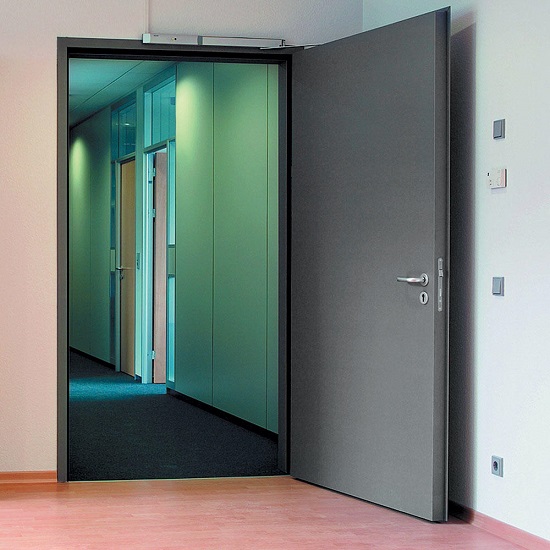The compartmentalization of buildings in different sectors using fire-resistant elements is essential in fire prevention. These compartments isolate the fire from the rest of the sensitive areas, thus achieving an easier extinguishing and minimizing the risk to people and a significant reduction in material losses. To guarantee that the compartmentalization is effective, it is necessary to have a fire door and shaft door duly homologated and certified according to current regulations.
Classification of fire doors
There are two main indicators, determined through the tests to which fire doors are subjected, which will allow us to classify them according to their resistance to fire (EI 2) and their durability (C).
Fire resistance
The objective that is intended with the determination of the resistance to fire is to assess the behavior of the sample when it is subjected to defined conditions of heating and pressure. Factor “I” can be measured and classified in two ways, represented by subscripts 1 and 2, depending on the different national regulations. Spanish regulations require EI 2.
In this way, we can classify fire doors according to their fire resistance time (measured in minutes) in EI2 60, EI2 90, EI2 120. According to the fire door manufacturer, the normalized time scale is 15, 30, 45, 60, 90, 120, 180 and 240 minutes.
Durability of self-closing
A self-closing latch (C) is the ability of a door to close fully into the frame and engage the latch device. The results are classified according to the EN 13501-2 standard and are expressed with a “C,” followed by a digit between 0 and 5, determined by the number of test cycles.
Normative
The regulations on compartmentalization that fire doors must comply with are contained in the Technical Building Code (RD 314/2006) and the Fire Safety Regulations in Industrial Establishments (RD 2267/2004).
Gunnebo fire doors comply with the UNE EN 1634-1 Standard (Fire Resistance Test for doors and other opening-closing elements), having passed all the necessary tests, which guarantees the maximum safety and resistance of the doors.
Types of fire doors
Opaque pivots: They have one or two blades made of electro-galvanized steel. These leaves pivot on a frame that has CE marked hinges, according to standard EN 1935: 2002. The resistance levels of these fire doors range from EI 2 60 to EI 2 120, which means resistance times between 60 and 120 minutes.
Glazed pivots: They have one or two leaves made of AISI 304/316 steel and fire-resistant glass. The resistance levels of these doors range from EI 2 60 to EI 2 120.
Slides: Specially designed to close large gaps. They can be motorized or fully manual. They have constructed 1.2 mm electro-galvanized steel. The resistance levels of these doors range from EI 2 60 to EI 2 240.
Guillotine: Designed to close vertical gaps of great dimensions in height but reduced in width. They have a safety mechanism that prevents the door from closing in the event of an obstacle in the gap. In an emergency, the system allows the door to close at a speed of 0.20 m / s so that it is not violent or dangerous. It is constructed of 1.2 mm electro-galvanized steel. The resistance levels of these doors range from EI 2 60 to EI 2 240.





Leave a Reply